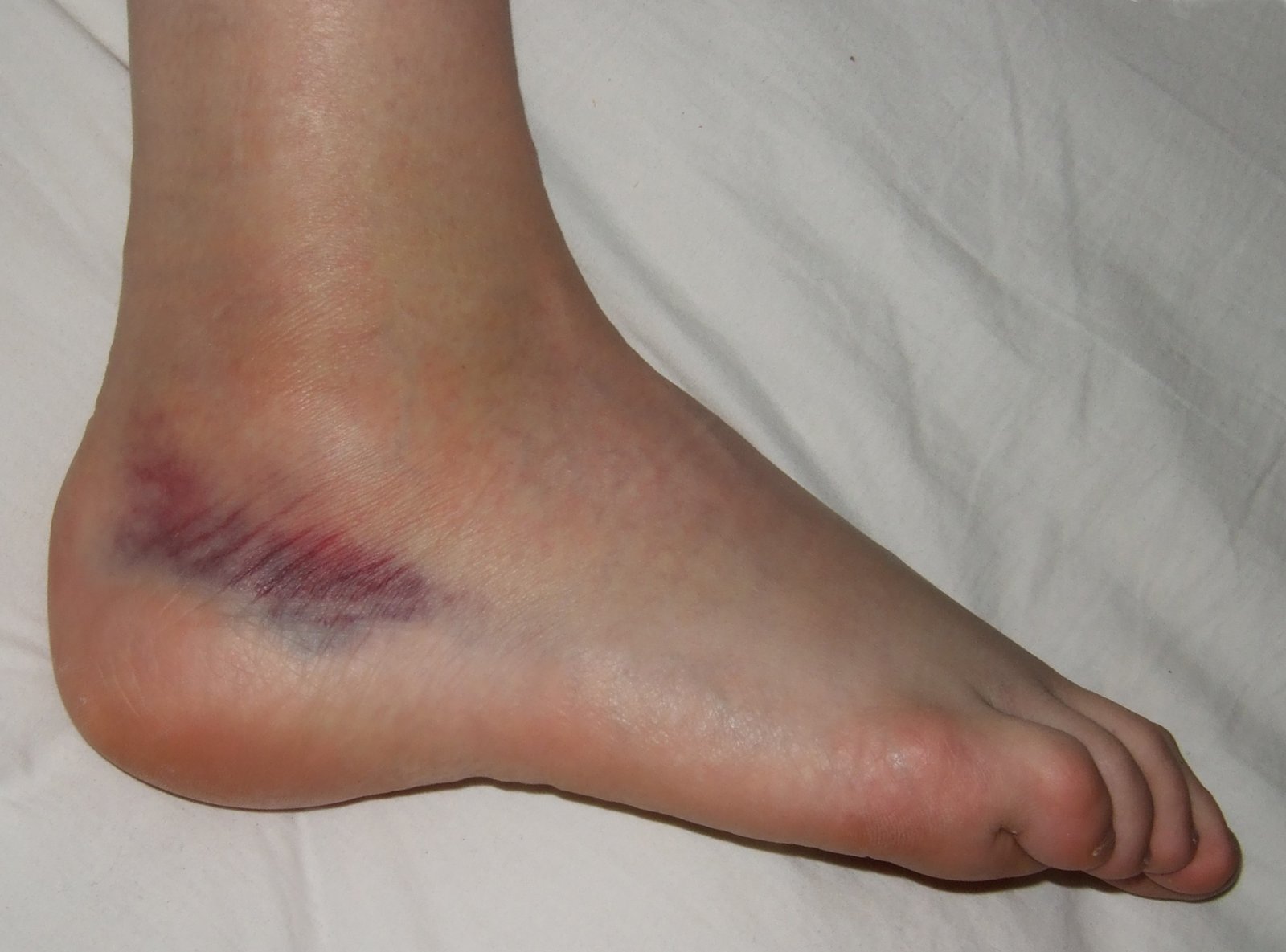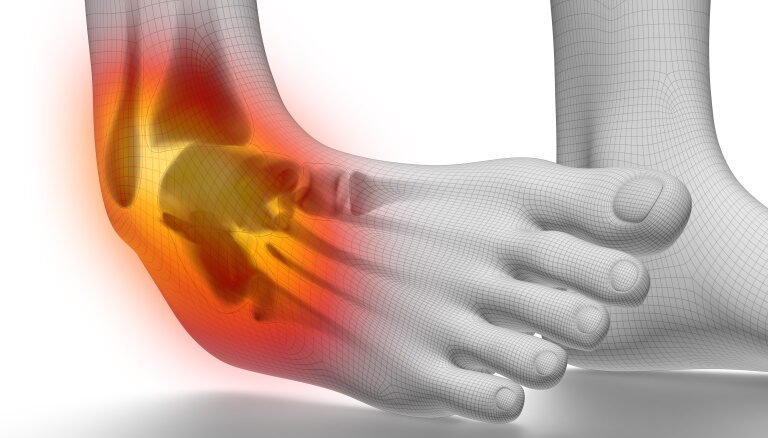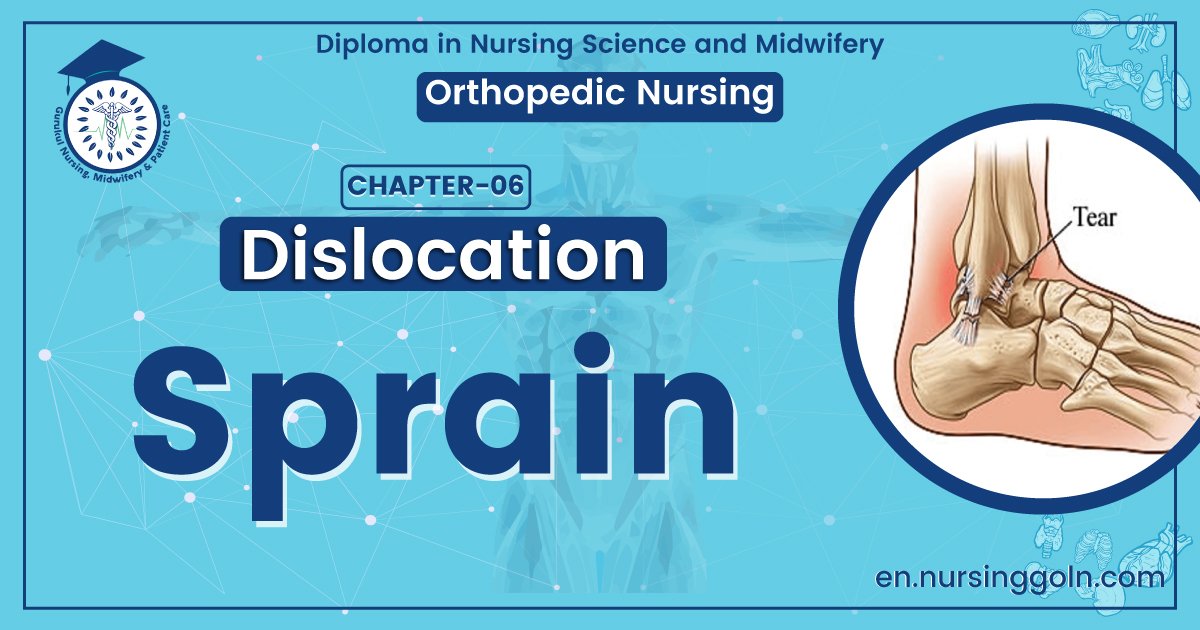Medical Definition of Sprain – An orthopedic nurse is a nurse who specializes in treating patients with bone, limb, or musculoskeletal disorders. Nonetheless, because orthopedics and trauma typically follow one another, head injuries and infected wounds are frequently treated by orthopedic nurses.
Ensuring that patients receive the proper pre-and post-operative care following surgery is the responsibility of an orthopedic nurse. They play a critical role in the effort to return patients to baseline before admission. Early detection of complications following surgery, including sepsis, compartment syndrome, and site infections, falls under the purview of orthopedic nurses.
Medical Definition of Sprain
Definition of sprain:
Tearing of ligaments and tissues connected with the joint is called sprain.
Or
Sprain is a tear in the ligaments. The severity varies from grade I to grade III. Mild sprains are more common and heal by conservative treatment, whereas grade III sprains cause joint instabilities and need to be repaired surgically. Sprains are commonly encountered in knee joints and ankle joints.

[Reference: John Ebnezar’s Orthopaedics for nurses, Ed-1″, P:24]
A sprain is any painful wrenching (twisting or pulling) movement of a join joint, but the term is generally enerally reserved for joint injuries less severe than actual tearing of the capsule or ligaments.
[Reference: Apley’s System of Orthopaedics and fractures, Ed-9h, P: 730]

A sprain is an injury to ligaments that is caused by being stretched beyond their normal capacity and possibly torn. A muscular tear caused in the same manner is referred to as strain.
Or
Sprain may be defined as tearing of the ligaments.
Or
A sprain is an injury to ligaments structures surrounding a joint caused by a wrenching or twisting.
(Ref-Lippincott,Adult Orthopedic Nursing, I edition, Page-86)
Or
A sprain may be defined as the injury to a ligament resulting from over stress which causes some degree of damage to the ligament, fibers or their attachments. [
[Ref-Luckmann and Sorensen, Medical-Surgical nursing, 2nd editions, Page-1685]
Types of sprain:
A. On the basis of severity of injury: When we experience an ankle sprain, it is the amount of force placed on your foot that will determine the grade of the sprain.
1) Grade-I (Mild sprain): A few fibers of the ligaments have been torn, but there is no functional loss.
a) Slight pain. a
b) Slight swelling.
c) Stretch test will be positive.
d) Tenderness at the site of injury.
2)Grade-II (Moderate sprain): The ligaments may be partially torn or detached from the attachment.
a) Tenderness and swelling.
b) Acute pain.
c) Localized haemorrhage.
d) Restricted movement.
e) Wt bearing is difficult.
3) Grade-III (Severe sprain): Ligaments are torned completely:
a) Gross swellings.
b) Painful and tenderness is quiet sever.
c) Joint is unstable.
d) Possible deformity.
B. On the basis of site sprain :
1. Inversion sprain / Lateral ligament sprain: The most common type of ankle sprain is known as an inversion sprain (or lateral ligament sprain) where the ankle turns over so the sole of the foot faces inwards. When this type of ankle sprain happens, the outer, or lateral ligaments are stretched too far and damaged. About 90% of ankle sprains are inversion injuries. Pain is always on the outside of the ankle, and there is usually no pain on the inside of the ankle joint.
2. Eversion sprain / A medial ligament sprain: A medial ligament sprain is rare but can occur, particularly with a fracture. This happens when the ankle rolls the other way, so the sole of the foot faces outwards, damaging the ligaments on the inside of the ankle, particularly the deltoid ligament.
3. High ankle sprain In a high ankle sprain, the ligaments above the ankle joint are also injured. These ligaments, called the syndesmosis ligaments, can also be injured during an ankle sprain.

[Ref-Lippincott, Adult Orthopedic Nursing, I” edition, Page-86+ Luckmann and Sorensen, Medical-Surgical nursing, 2nd editions, Page-1685]
Clinical feature of sprains:
A. Symptoms:
1. Pain and tenderness at the site of injury.
2. Swelling at the joint and bruising.
3. Tenderness around the joint increased by movement.
B. Signs:
1. Movement grossly restricted.
2. Discoloration.
First aid management of a sprain patient:
1. Keep patients in rest.
2. Avoid movements of the injured limbs.
3. Pressure bandage to prevent swellings.
4. Elevation of the injured limb.
5. Apply cold compress.
6. Active movements of the unaffected joints.
Management of a case of sprains patients:
A) Conservative management:
- Complete bed rest.
- Immobilization of joint by splint or cast.
- Cryotherapy to alleviate pain.
- Isometric exercise to affected limbs.
- 5Active exercise in unaffected joints.
- POP (plaster of paris) for 6-8 weeks if ligaments tear does not cause displacement.
B) Surgical managements: If the ligament is torn and bone is displaced its need to surgical repair and immobilization with POP cast for 6-8 weeks.
[Ref-John Ebnezar’s “Textbook of Orthopedics” 4th edition page-98]
Complications of moderate sprains:
1. Recurrent sprains.
2. Persistant instability.
3. Traumatic arthritis.

a. Ankle sprain
b. Please see above.
c. Please see above.
a) Ankle sprain
b) Please see above.
c) Please see above.
Read more:
